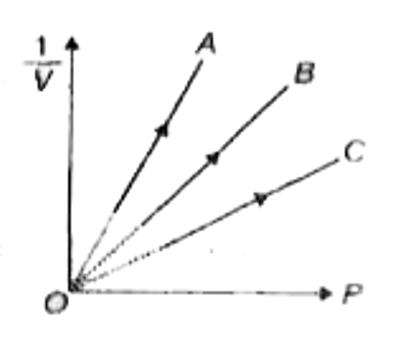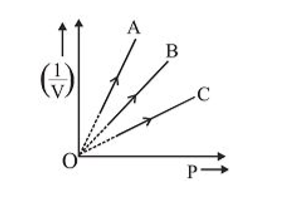(Figure) Shows three isothermal curves at temp T1,T2andT3
T3>T2>T1. A system changes its state by four paths a, b, c, and d, .Identify the path in which changes in internal energy of the system is maximum.
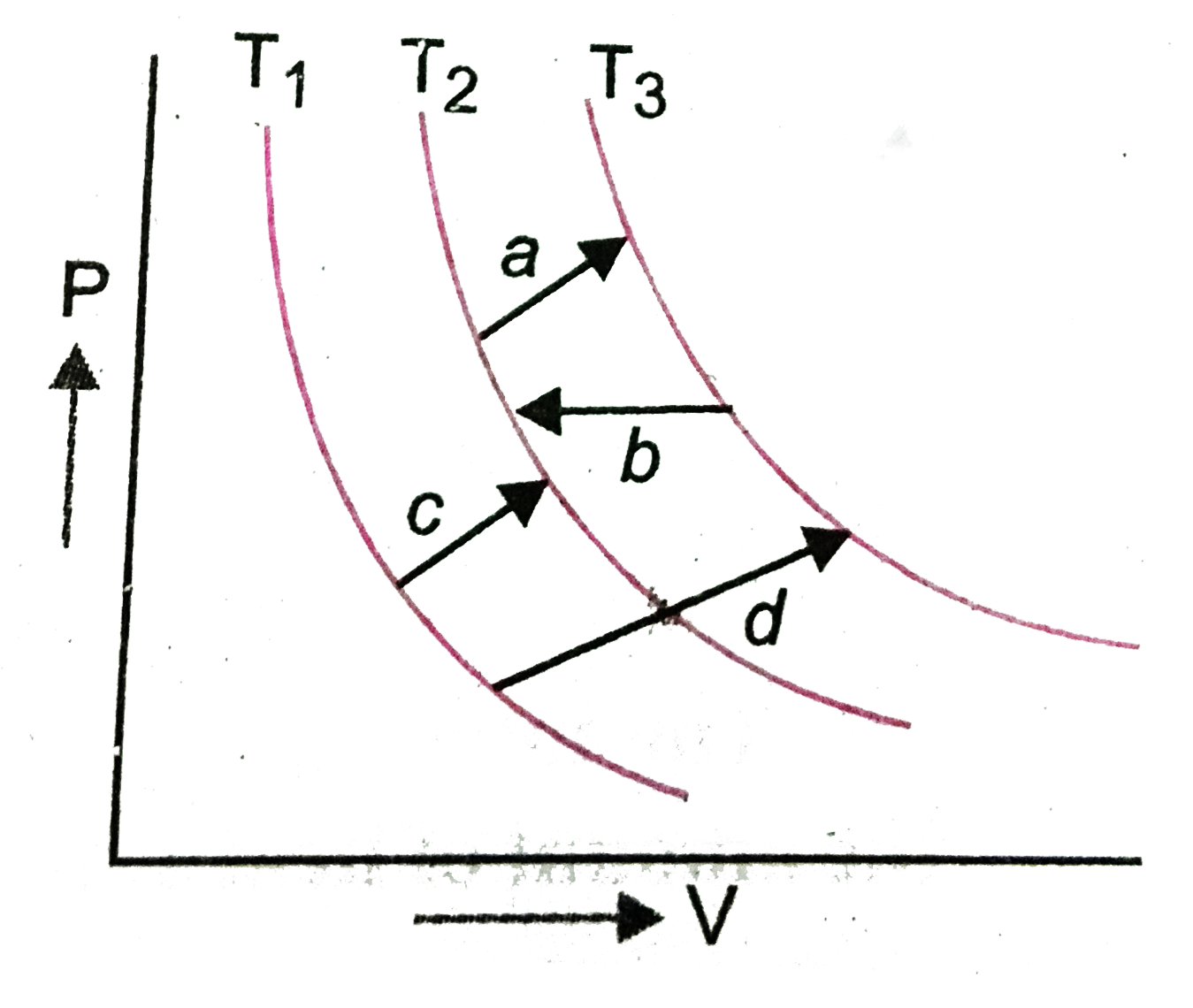
The change in internal energy vaties directly as the difference in temperatures of the system. In the path (d), difference in temperatures involved is (T3−T1), which is maximum. Therefore, change in internal energy would be maximum when the system follows the path (d).
Topper's Solved these Questions
- BOOK - PRADEEPCHAPTER - THERMODYNAMICSEXERCISE - Value based Questions4videos
THERMODYNAMICS
- BOOK - PRADEEPCHAPTER - THERMODYNAMICSEXERCISE - NCERT Questions10videos
THERMODYNAMICS
- BOOK - PRADEEPCHAPTER - THERMODYNAMICSEXERCISE - Long answer questions(NCERT)5videos
THERMODYNAMICS
- BOOK - PRADEEPCHAPTER - SYSTEMS OF PARTICLES AND ROTATIONAL MOTIONEXERCISE - Assertion- Reason Type questions20videos
SYSTEMS OF PARTICLES AND ROTATIONAL MOTION
- BOOK - PRADEEPCHAPTER - WORK, ENERGY AND POWEREXERCISE - Assertion-Reason Type Questions24videos
WORK, ENERGY AND POWER
Similar Questions
Knowledge Check
- Question 1 - Select One
Shown below are the black body radiation curves at temperature T1 and T2(T2>T1). Which of the following plots is correct?
A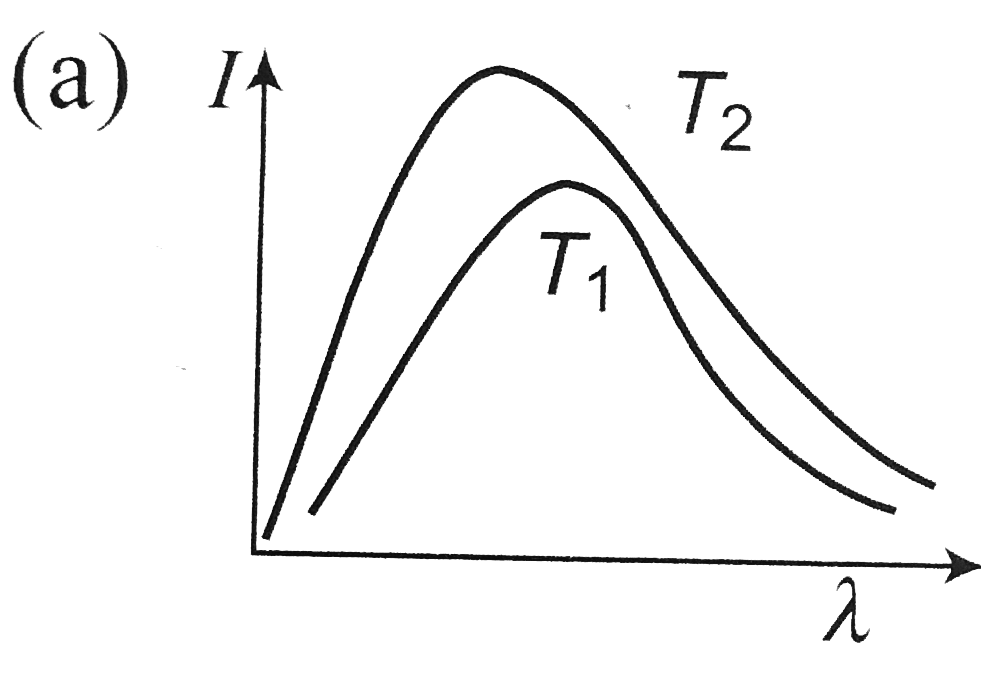 B
B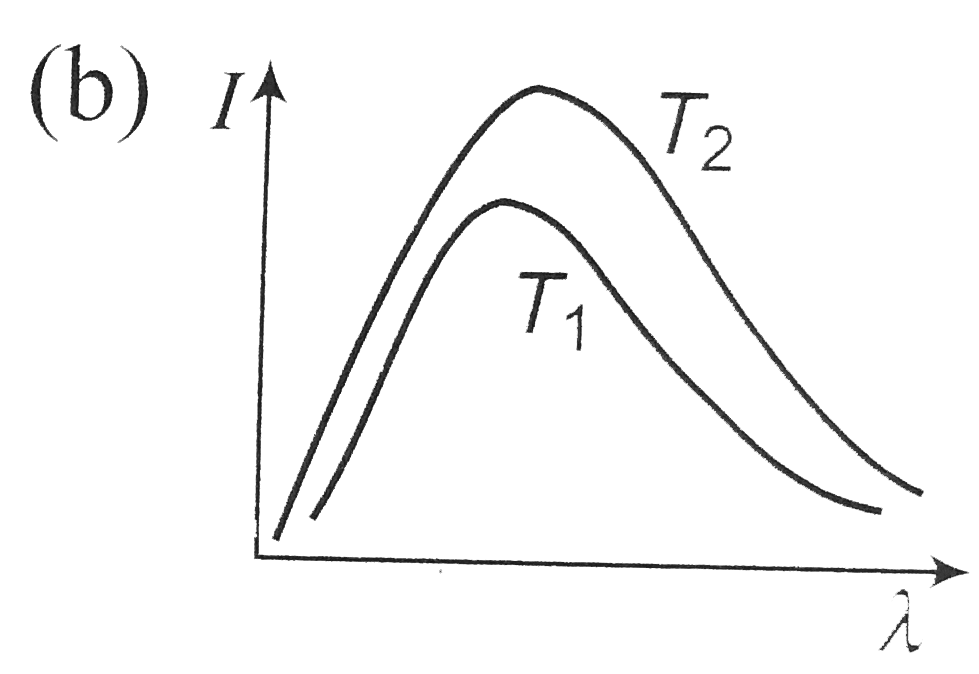 C
C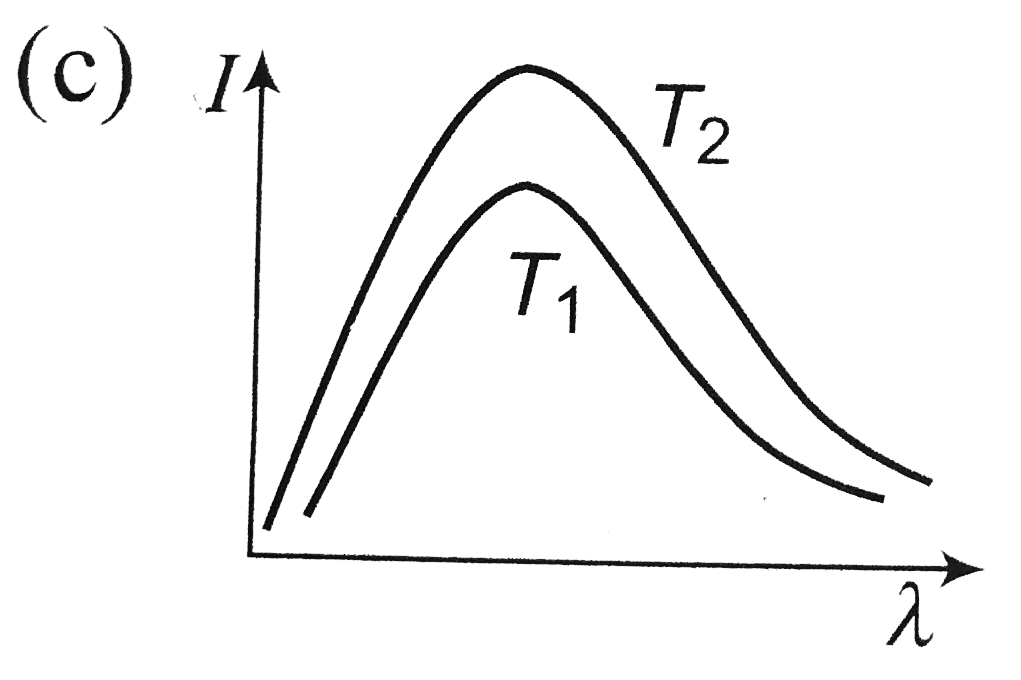 D
D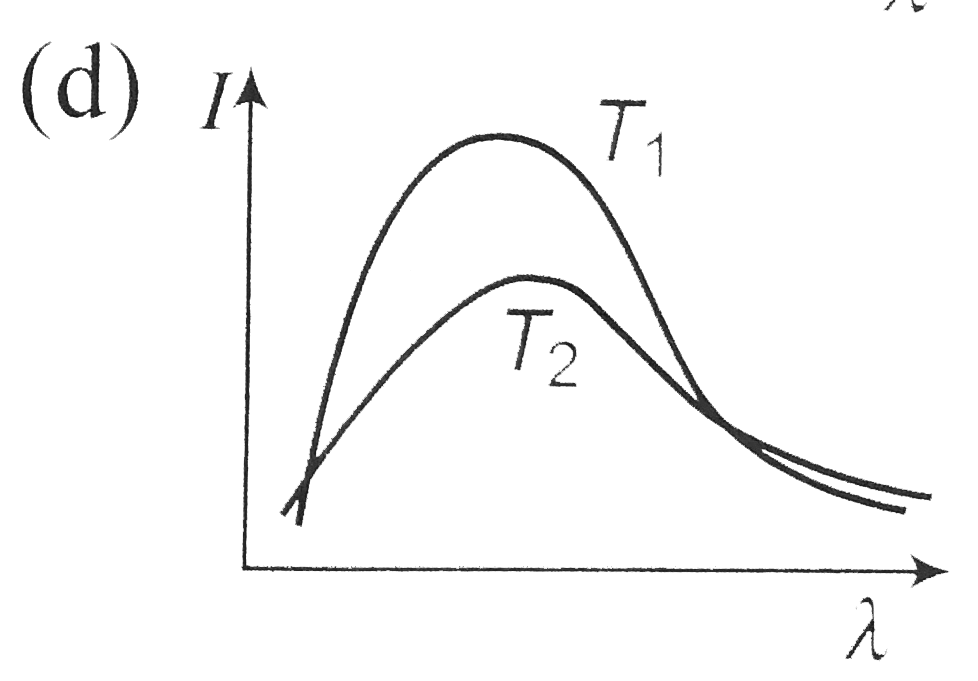
- Question 2 - Select One
A system is changed from state A to state B by one path and from B to A by another path. If ΔE1 and ΔE2 are the corresponding changes in internal energy, then
AE1+E2=−veBE1+E2=+veCE1+E2=0DNone of these - Question 3 - Select One
In following isothermal graphs A, B and C at temperatures T1,T2 and T3, the correct order of temperatures will be :
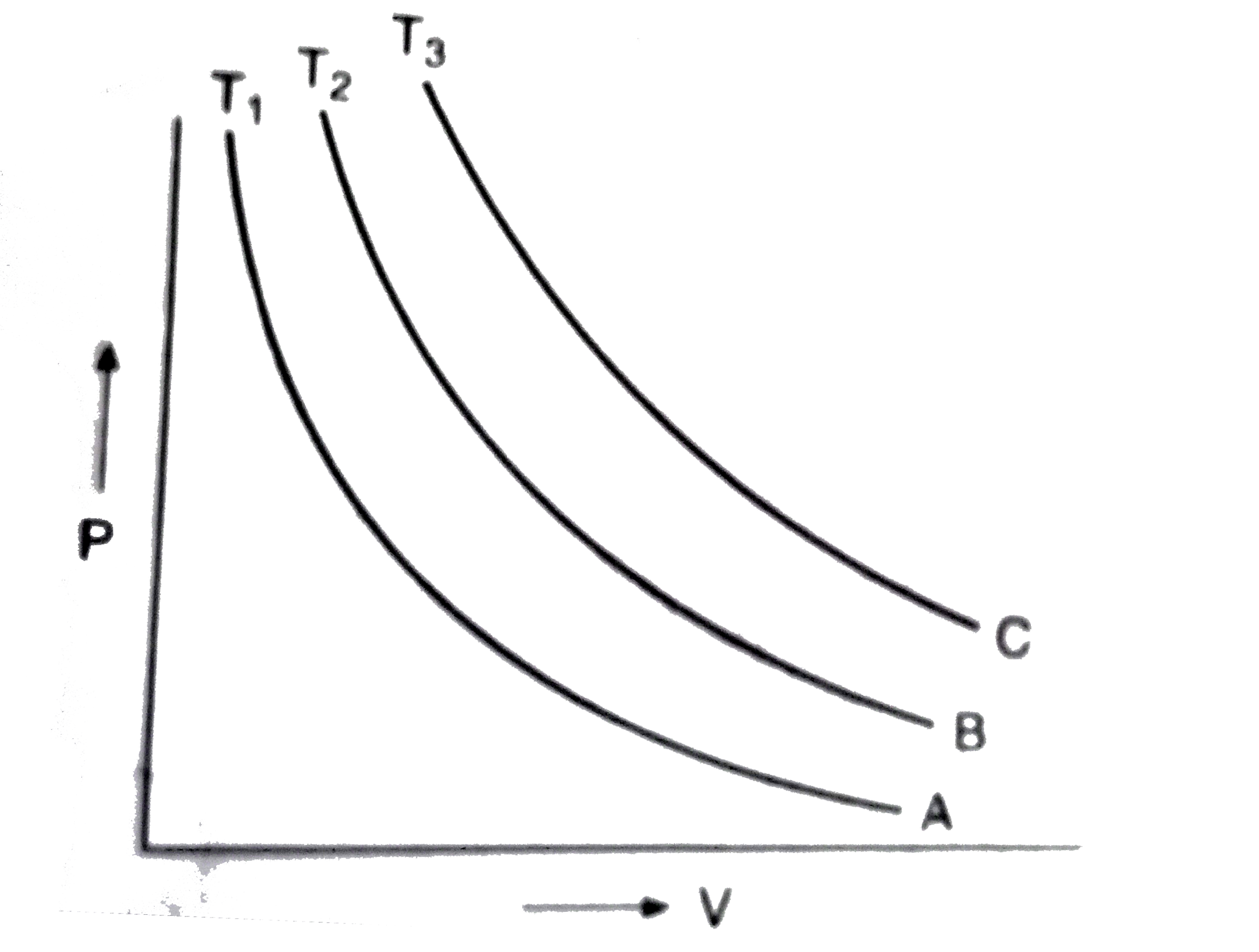 AT1>T2>T3BT1>T3>T2CT3>T2>T1DT3>T2>T2
AT1>T2>T3BT1>T3>T2CT3>T2>T1DT3>T2>T2
The figure shows two isotherms at temperatures T1 and T2. A gas is taken from one isotherm to another isotherm through different processes. Then change in internal energy ΔU has a relation -
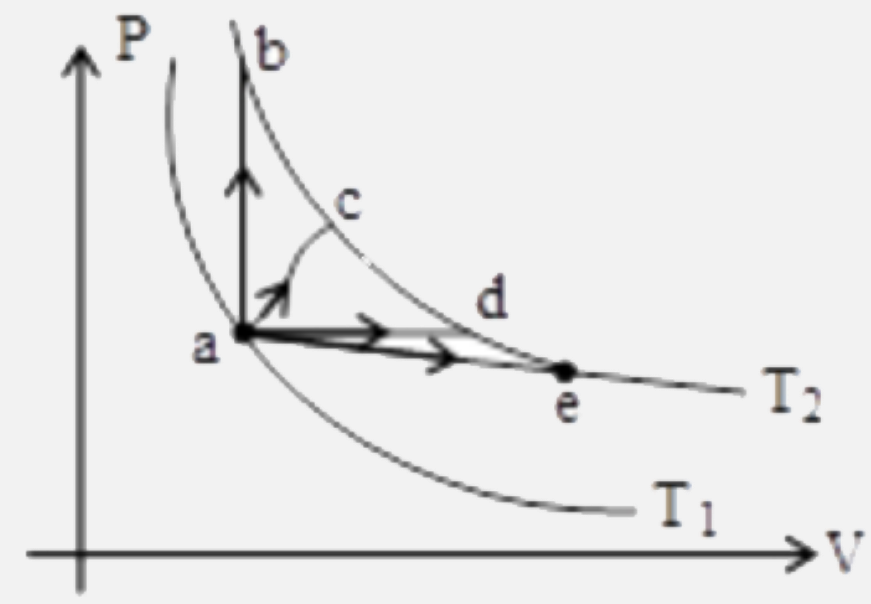 View Solution
View SolutionIn an adiabatic expansion of a gas initial and final temperatures are T1and T2 respectively, then the change in internal energy of the gas is
View SolutionThe figure shows the variation of V with i at temperatures T1 and T2. Then T1−T2 is proportional to
 View Solution
View SolutionA system is changed from state A to state B by one path and from B to A by another path. If ΔE1 and ΔE2 are the corresponding changes in internal energy, then
View SolutionThe isothermal diagram of a gas at three different temperatures T1,T2and_(3), is show in the given figure .Then
 View Solution
View Solution


